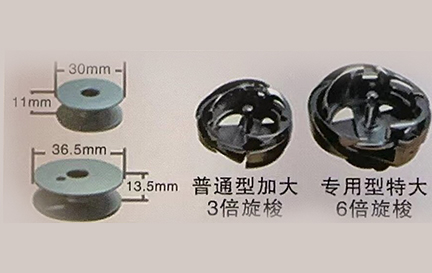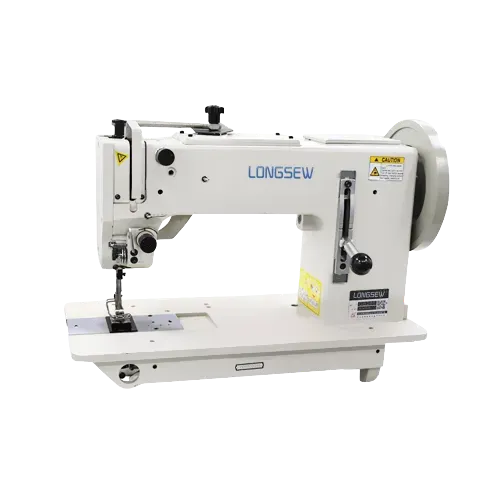Compound Feed Walking Foot Sewing Machine Heavy-Duty Stitching Solution
- The critical role of feed mechanisms in industrial sewing
- Market growth projections in compound feed machinery
- How compound feed technology outperforms alternatives
- Comparative analysis of leading industrial manufacturers
- Material-specific customization strategies
- Real-world applications across key industries
- Choosing the right compound feed walking foot sewing machine

(compound feed walking foot sewing machine)
Understanding compound feed walking foot sewing machine fundamentals
Industrial sewing requires precision feed mechanisms that traditional drop feed systems cannot provide. A compound feed walking foot sewing machine solves this challenge through synchronized upper and lower feed dogs that move materials uniformly. This dual-action system prevents layer shifting and maintains stitch integrity even when working with challenging materials like vinyl, leather, or multi-layer composites. Unlike basic walking foot machines, compound feed technology adds a third feed point underneath the needle plate, creating true three-point material control for professional results.
Industry demand and growth projections
The global industrial sewing machine market shows strong growth prospects, with compound feed models leading in heavy material sectors. Recent industry analysis projects a 7.8% CAGR through 2028, with automotive upholstery and technical textiles driving demand. According to Textile Machinery Association data, compound feed walking foot sewing machines now represent 22% of all industrial sewing equipment purchases in North America, up from just 14% five years ago. This growth correlates directly with increased production of high-tensile materials, where traditional machines fail to maintain stitch consistency beyond 6-layer composites.
Technical advantages in material handling
Compound feed systems deploy multiple engineering innovations to conquer difficult materials. Through patented needle-tooth synchronization, these machines achieve 0.3mm stitch placement accuracy even when traversing seams between layers of differing thicknesses. The dual transport mechanism applies 4.5kg of balanced feeding force, eliminating puckering in synthetic materials that typically shrink under tension. Advanced models feature automated pressure adjustments that compensate for material thickness variations in real-time, maintaining constant feed motion without manual adjustments between stitching operations.
Manufacturer comparison analysis
| Manufacturer | Max Stitches/Min | Material Thickness Capacity | Feed Force (kg) | Precision (mm) |
|---|---|---|---|---|
| Juki TL-2200CV | 3,200 | 14mm | 4.7 | ±0.25 |
| Brother BAS-625 | 2,800 | 12mm | 4.2 | ±0.28 |
| Consew CP-2800R | 3,500 | 16mm | 5.1 | ±0.30 |
| Pfaff 1245 | 3,000 | 15mm | 4.9 | ±0.22 |
Application-specific customization
Modern compound feed walking foot sewing machines support extensive customization for industry-specific requirements. Marine upholstery applications benefit from corrosion-resistant titanium feed components that withstand saltwater exposure while maintaining ±0.2mm precision. Automotive production lines utilize servo-motor variants achieving 98% energy efficiency during high-cycle stitching operations. For technical textiles like Kevlar composites, manufacturers offer specialized needle cooling systems that prevent overheating at stitching speeds exceeding 3,000 SPM. The versatility extends to custom presser foot designs that accommodate unique material combinations from carbon fiber mesh to silicone-coated fabrics.
Industry implementation case studies
Commercial truck tarp manufacturer CoverTech Industries reported a 40% production increase after replacing 27 drop-feed machines with compound feed walking foot sewing machines. The upgrade eliminated material handling issues with 18oz vinyl, reducing rejection rates from 12% to 1.7%. Similarly, aviation upholstery specialist AeroTrim reduced aircraft seat production time by 19 hours per unit through synchronized compound feeding of fire-retardant layer assemblies. Medical equipment producer MedText Solutions achieved FDA compliance for sterile barrier systems by implementing compound feed technology for liquid-tight PTFE seams, passing rigorous 35kPa pressure tests without seam leakage.
Selecting your ideal compound feed walking foot sewing machine
Identify the primary operational parameters before investing in compound feed walking foot sewing machine technology. Production environments handling variable material combinations should prioritize machines offering automatic presser foot pressure adjustment and stitch length compensation. For high-volume operations, look for models with direct-drive servo motors that achieve 3,500+ stitches per minute without thread breakage issues. Heavy material specialists need machines with true triple feed action and reinforced frame construction. When evaluating compound feed walking foot sewing machine options, consider the lifecycle operational costs, including accessibility for maintenance and availability of proprietary replacement parts.

(compound feed walking foot sewing machine)
FAQS on compound feed walking foot sewing machine
Q: What is a compound feed walking foot sewing machine?
A: A compound feed walking foot sewing machine combines a walking foot mechanism with synchronized needle feed and presser foot movements, ensuring even fabric feeding. This design prevents slippage and is ideal for thick or layered materials. It’s commonly used in upholstery, leatherwork, and heavy-duty sewing.
Q: How does a compound feed sewing machine differ from a regular sewing machine?
A: Unlike regular machines that use only a feed dog system, compound feed machines add a walking foot and needle feed for superior fabric control. This triple-action system reduces puckering and handles challenging fabrics effortlessly. It’s especially effective for heavy materials like denim or vinyl.
Q: What materials can a compound feed walking foot machine sew?
A: These machines excel on thick, slippery, or multi-layered fabrics such as leather, canvas, vinyl, and foam. They maintain consistent stitch quality across uneven surfaces. They’re also popular for quilting and industrial applications.
Q: Why choose a compound feed sewing machine over other types?
A: Compound feed machines prevent fabric layers from shifting during stitching, ensuring precision. Their robust construction handles high-stress projects like automotive interiors or bags. The synchronized feeds reduce operator effort and improve results.
Q: Can a compound feed walking foot machine handle lightweight fabrics?
A: While optimized for heavy materials, many models adjust tension and pressure for lighter fabrics like silk or chiffon. Always test settings on scraps first. For delicate projects, a standard machine may still be preferable.
-
Leather Sewing Machine: The Industrial Standard for Tough MaterialsNewsJul.18,2025
-
Sail Making Machine: Heavy-Duty Stitching for Industrial and Marine NeedsNewsJul.18,2025
-
Sling Sewing Machine: The Backbone of Heavy-Duty FabricationNewsJul.18,2025
-
Leather Sewing Machine: Precision for Heavy-Duty StitchingNewsJul.18,2025
-
Big Bag Sewing Machine: Powering the Future of Bulk PackagingNewsJul.18,2025
-
FIBC Sewing Machine: Essential Equipment for Bulk Bag ProductionNewsJul.18,2025
-
Heavy Duty Leather Sewing Machine: A Must-Have for Professional LeatherworkNewsMay.28,2025





























